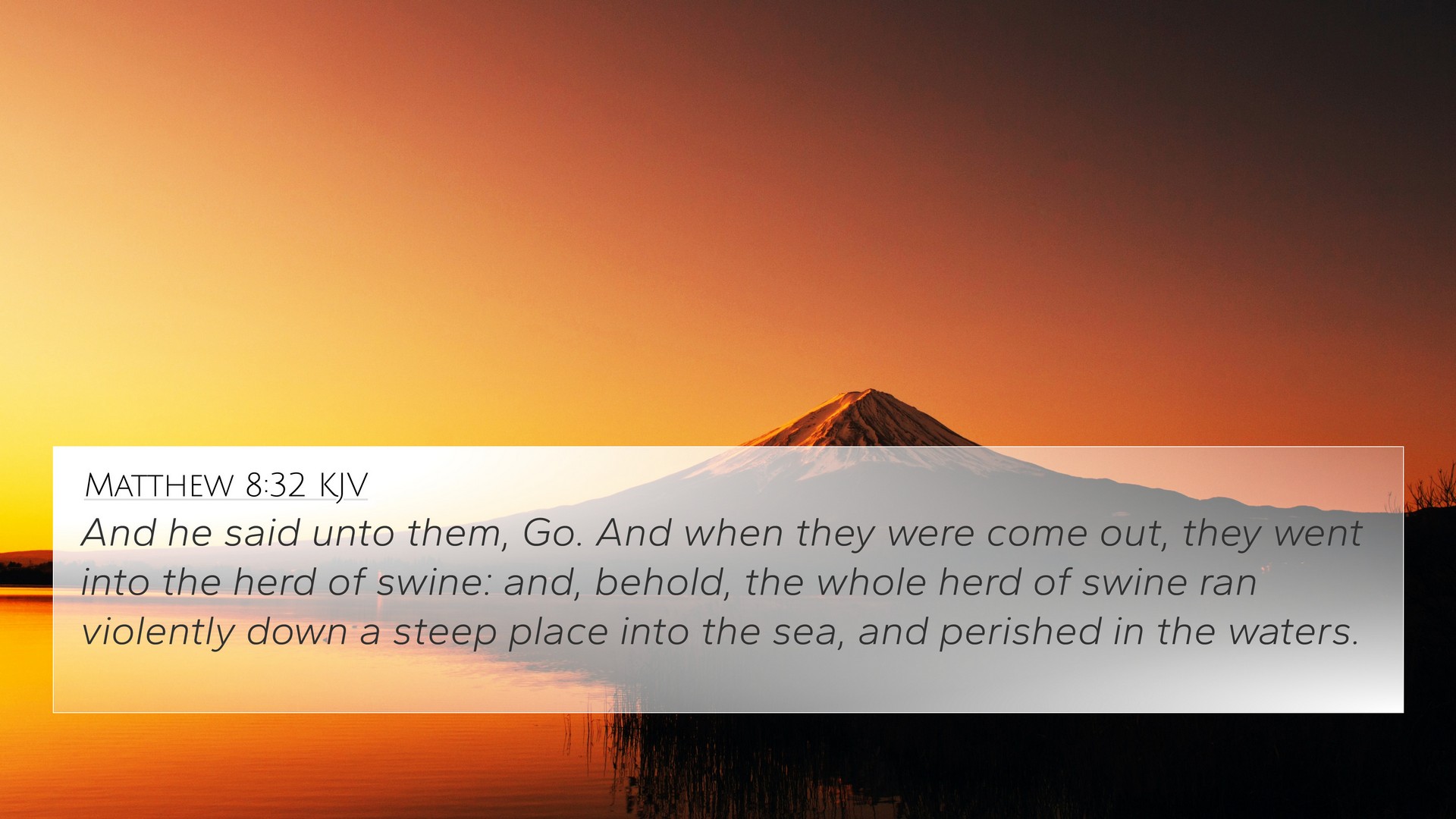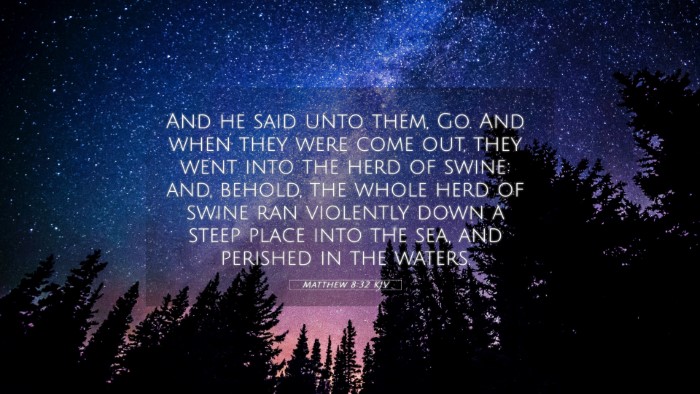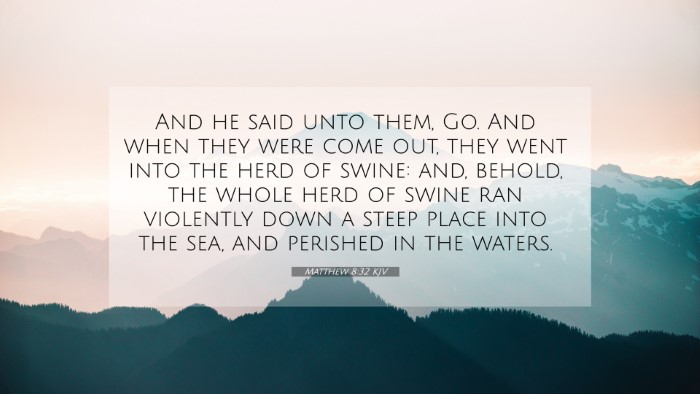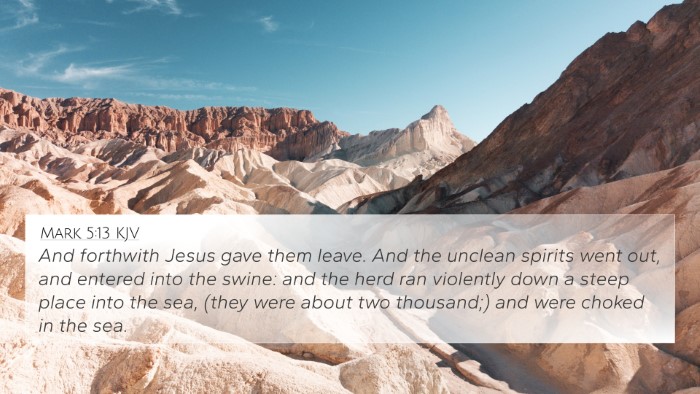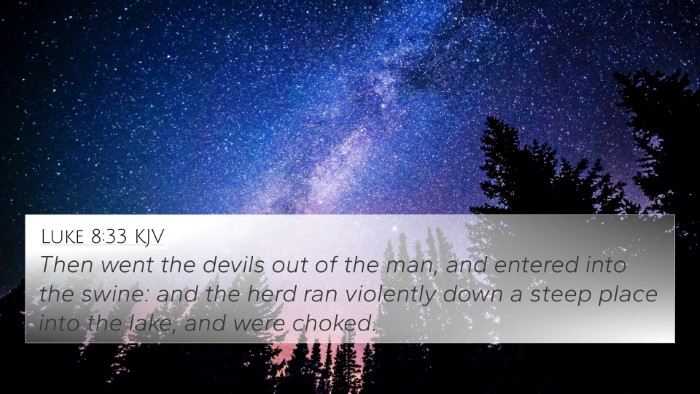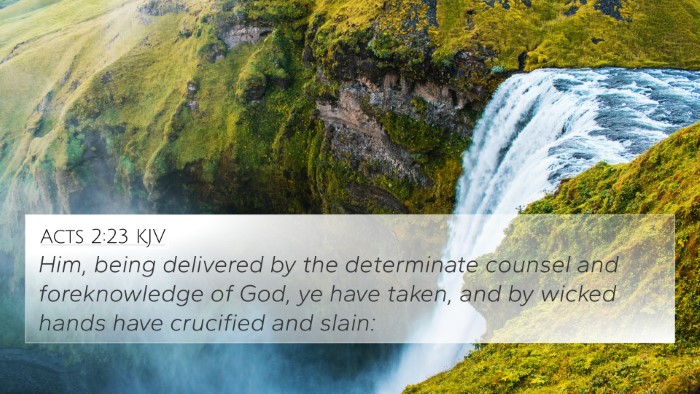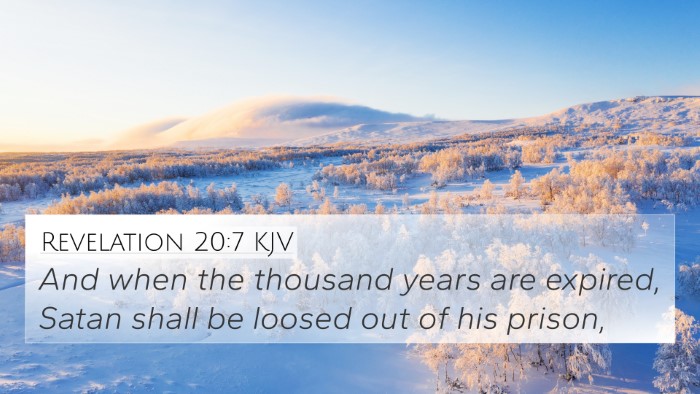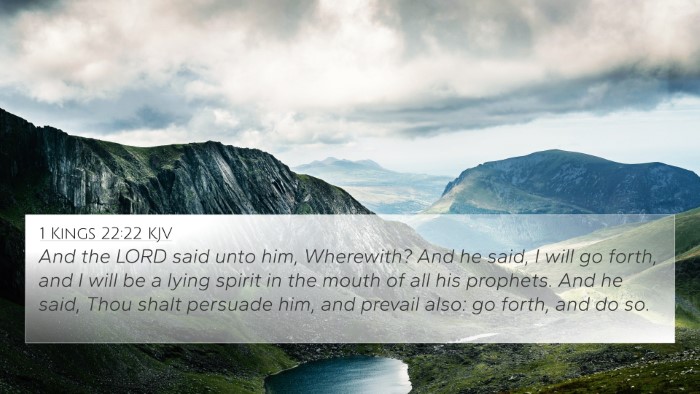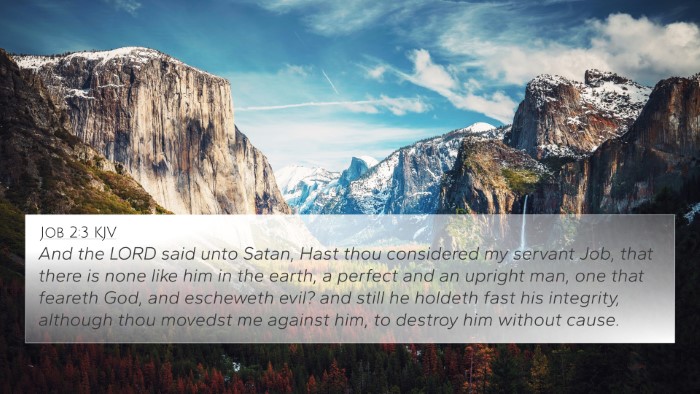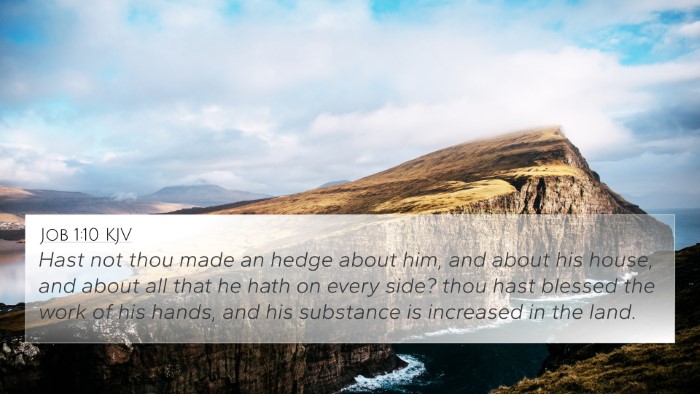Understanding Matthew 8:32
Matthew 8:32 states, "And he said unto them, Go. And when they were come out, they went into the herd of swine: and, behold, the whole herd of swine ran violently down a steep place into the sea, and perished in the waters."
This verse recounts a moment in the ministry of Jesus, where He exercises authority over demons, leading to profound implications for understanding His power, the nature of spiritual warfare, and the response of those affected by such miraculous events.
Context and Background
The setting for this event occurs shortly after Jesus had crossed the Sea of Galilee, arriving in the region of the Gerasenes. Here, He encounters two men possessed by demons. The swine, which are used in this miracle, serve as a crucial element in understanding the significance of Jesus' actions.
Commentary Insights
Matthew Henry
Henry highlights the power and authority of Christ, noting that demons recognize His sovereignty and plead with Him rather than confronting Him. The destruction of the swine demonstrates the severity of the evil that had possessed these men. It underlines how the forces of darkness are intent on destruction, contrasting with the benevolence of Christ who seeks to liberate.
Albert Barnes
Barnes discusses the cultural implications of this incident, explaining how swine were considered unclean animals in Jewish law. The choice to cast the demons into the herd of swine speaks to the dramatic illustration of the purification and liberation Jesus brings. Barnes also comments on how this act affects the local community, revealing a tension between valuing personal freedom from evil and economic loss due to the swine's destruction.
Adam Clarke
Clarke focuses on the symbolic nature of the swine’s death, suggesting it parallels the fate awaiting those who are spiritually afflicted and unrepentant. Additionally, he points out how the account serves as a vivid lesson on the impact of sin and the cost of disobedience to God. Clarke emphasizes the broader theological implications for understanding the nature of evil and Christ's mission to confront it.
Bible Cross-References
- Mark 5:11-13 - A parallel account of the same event in Mark's gospel.
- Luke 8:32-33 - Another account confirming the details of the event.
- Matthew 12:43-45 - Discusses the return of unclean spirits and spiritual desolation.
- Matthew 4:24 - Highlights Jesus' healing of the afflicted and demon-possessed.
- 2 Peter 2:22 - Speaks about the consequences of turning back from righteousness.
- Revelation 12:7-9 - Discusses the ongoing spiritual battle and the defeat of evil.
- James 2:19 - Alludes to the recognition of God’s authority by demons.
Thematic Connections
Matthew 8:32 connects to various Biblical themes, including:
- Authority of Christ - Demonstrated through His command over demons.
- Spiritual Warfare - Indicating the ongoing fight against evil forces.
- Redemption and Restoration - Showing Christ's role in liberating those oppressed.
- Consequences of Sin - The fate of the swine symbolizes the destruction that sin leads to.
Interpretative Insights
This passage encourages reflection on the nature of Jesus' authority and the acceptable responses to His power. It prompts believers to consider:
- How does this passage reveal Jesus’ identity as the Son of God?
- What can we learn about the reality of spiritual oppression?
- In what ways does this account challenge or inspire personal faith?
Cross-Referencing Biblical Texts
The power of cross-referencing scripture aids in the deeper understanding of Matthew 8:32. By establishing connections between verses, we can better appreciate the theological implications of Christ's actions:
- Use a Bible concordance to explore terms like "demons" and "swine."
- Explore cross-referenced themes through a Bible cross-reference guide focusing on deliverance.
- Engage in cross-reference Bible study to align Old Testament prophecies with their New Testament fulfillments.
Conclusion
Matthew 8:32 serves as a vivid depiction of Jesus' authority over evil, illustrating both His compassion for those in bondage and the seriousness of sin. This exploration through public domain commentaries allows for a richer understanding and appreciation of scriptural text, highlighting the importance of linking Bible scriptures for comprehensive biblical interpretation.
